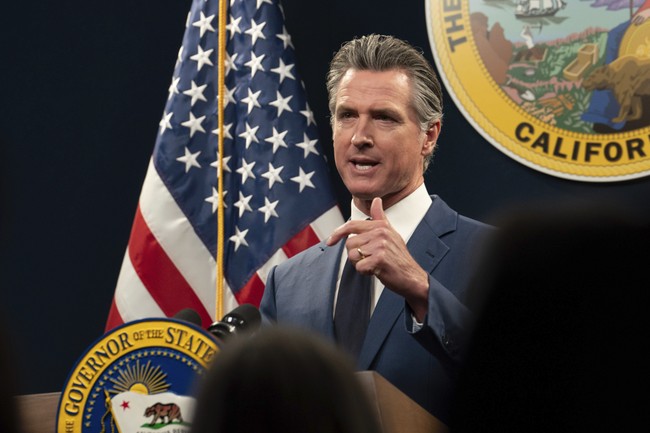Supreme Court Shapes Louisiana's Political Map
In a pivotal decision, the Supreme Court has mandated Louisiana to use a congressional map that ensures two majority black districts for the 2024 elections, amidst ongoing disputes over racial gerrymandering.
Published May 17, 2024 - 00:05am

Image recovered from bostonglobe.com
The United States Supreme Court has recently ordered Louisiana to hold its 2024 congressional elections with a revised map that introduces an additional majority Black district. This directive aims to address the underrepresentation concerns voiced by Black voters and civil rights advocates in the state. The map, which now includes two majority black districts out of six, could significantly affect the balance of power in the closely contested House of Representatives, potentially boosting Democrats' control.
Despite the high court's order, it did not address the specifics of a lower court's decision that had previously found the map to be excessively race-based. The emergency appeals necessitated the Supreme Court's intervention to prevent electoral confusion, with both the state's top GOP officials and Black voters requesting quick resolution. This intervention follows a history of disputed maps in Louisiana, where despite significant Black population, gerrymandering has maintained five majority white Republican-leaning districts against one majority Black Democratic-leaning district.
U.S. District Judge Shelly Dick had ruled the original efforts likely discriminatory, putting the matter up for Supreme Court consideration along with a parallel case from Alabama. While the high court ultimately affirmed the Alabama decision, it has yet to decide whether to hear arguments over the Louisiana map's legality. Attempts to redraw the map were opposed by a group of non-African American plaintiffs, alleging it too was racially motivated, in violation of the Constitution.
Political figures have taken various positions, with new Gov. Jeff Landry, a Republican who previously defended the map, now urging the adoption of a new one with an additional Black district. On the other side, the newly drawn map's challenges assert political machinations over racial considerations, emphasizing the political safeness offered to Republican leaders. As the legality and motivations behind the maps continue to stir debate, the potential implications on Louisiana's Black voters and the state's political landscape into the 2024 elections remain central to this ongoing discourse.
The recent directive from the United States Supreme Court, mandating a redesigned congressional map for Louisiana, signifies a profound shift in the state's political dynamic—one that could have repercussions beyond its borders. For decades, Louisiana's gerrymandered districts have cast a long shadow on the state's electoral process, raising questions about the fairness and integrity of its political representation. With the introduction of a new majority Black district, the intention is to rectify these long-standing issues and move towards a more equitable representation framework.
Current demographic trends indicate that the Black population represents a significant proportion of Louisiana's populace, yet this has not been reflected in its congressional delegation. This discrepancy has been the source of numerous legal battles and public outcry, suggesting a systemic neglect for racial parity within Louisiana's political structure. The Supreme Court's insistence on swift action underscores the urgency and importance of this matter, as any further delays could negatively influence the state's electoral readiness for the upcoming 2024 elections.
The ordered revision of the congressional map is not just a domestic matter; it is observed under the magnifying glass of national politics, where every congressional seat can tip the scales. Analysts predict that a second majority Black district could empower the Democrat constituency, potentially impacting national policies and federal legislation. This power shift could signal a broader national trend towards greater diversity and inclusion in political representation across the United States.
The debate surrounding the new map raises fundamental questions about the role of race in districting. Opponents of the redrawn map cite concerns over racial gerrymandering and the purported unconstitutionality of such practices. However, proponents argue that these measures are necessary to ensure minority communities have a voice in the halls of power. The intricate balance between ensuring fair representation for racial minorities and avoiding race-based districting highlights the complexities inherent in redistricting processes.
While the Supreme Court has left the specifics of the lower court's findings on racial considerations in district mapping unclear, it has sent a loud message about the priority of representation and equal voter influence. The overriding necessity to provide a more balanced political arena where all demographics can partake equally is evident in the court's decision. This judgement has not only local but also national connotations as it aligns with broader civil rights objectives and the reevaluation of electoral laws and practices across the country.
There is also a broader discourse around the role of the judiciary in shaping electoral maps. The Supreme Court's involvement in the Louisiana case reaffirms its influential role in guiding the contours of American democracy. This latest move is a testament to the ongoing debate regarding the judiciary's place in determining political boundaries—a debate that is likely to persist as other states consider redistricting and court cases on similar issues continue to surface.
Looking ahead to the 2024 elections and beyond, Louisiana's redrawn congressional map could become a yardstick for other states grappling with issues of representation and minority inclusion. The Supreme Court's directive could therefore have far-reaching implications, not only in how districts are constructed, but in how the nation as a whole contemplates and honors the diversity of its electorate. Furthermore, the unfolding political narrative in Louisiana could galvanize voters and civil rights advocates alike, potentially heralding a new chapter in American electoral history—one that favors fairness, inclusion, and the equitable distribution of political power.
In the ensuing months, as map drawers go back to the drawing board and political strategists evaluate the new potential outcomes, attention will remain fixed on Louisiana. The success of this revised map in addressing the concerns of underrepresented communities will be closely watched, with the hope that it will usher in a new era of justice and equity in political representation. The Supreme Court has set the stage for a significant transformation in American politics, with the reverberations of its decision likely to be felt for many years to come.






